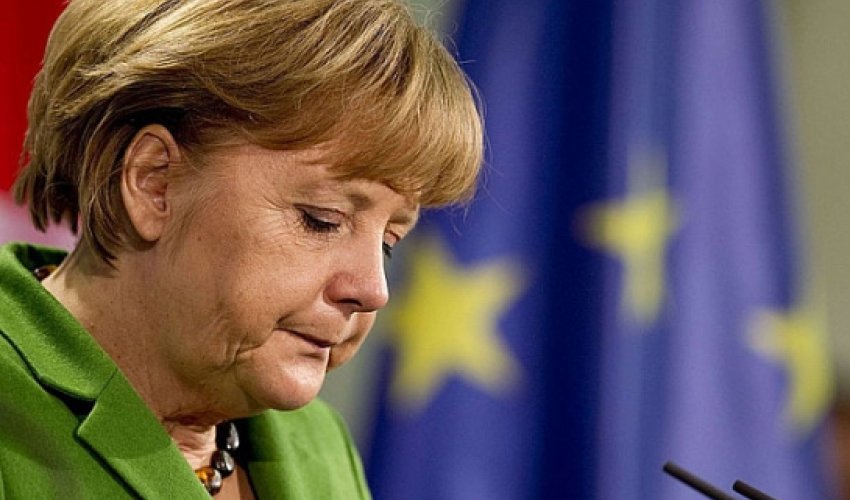German model is ruinous for Germany, and deadly for Europe

Large ships were forced to go around the Skagerrak, imposing emergency surcharges. The canal was shut again last month because sluice gates were not working, damaged by the constant thrust of propeller blades. It has been a running saga of problems, the result of slashing investment to the bone, and cutting maintenance funds in 2012 from €60m (£47m) a year to €11m.This is an odd way to treat the busiest waterway in the world, letting through 35,000 ships a year, so vital to the Port of Hamburg. It is odder still given that the German state can borrow funds for five years at an interest rate of 0.15pc. Yet such is the economic policy of Germany, worshipping the false of god of fiscal balance.The Bundestag is waking up to the economic folly of this. It has approved €260m of funding to refurbish the canal over the next five years. Yet experts say it needs €1bn, one of countless projects crying out for money across the derelict infrastructure of a nation that has forgotten how to invest, sleepwalking into decline.France may look like the sick of man of Europe, but Germany’s woes run deeper, rooted in mercantilist dogma, the glorification of saving for its own sake, and the corrosive psychology of ageing.“Germany considers itself the model for the world, but pride comes before the fall,” says Olaf Gersemann, Die Welt’s economics chief, in a new book, The Germany Bubble: the Last Hurrah of a Great Economic Nation.Mr Gersemann says the Second Wirtschaftswunder – or economic miracle – from 2005 onwards has “gone to Germany’s head”. The country has mistaken a confluence of exceptional events for permanent ascendancy. It cannot continue to live off exports of capital goods to China and the BRICS as they hit the buffers, or by stealing a march on southern Europe through wage compression, a zero-sum game.Marcel Fratzscher, head of the German Institute for Economic Research (DIW), makes a parallel critique (more Keynesian in flavour) in his new book, Die Deutschland Illusion, no translation needed. It is a broadside against the fiscal fetishism of finance minister Wolfgang Schauble, now written into the constitution as a balanced budget law from 2016 onwards, making it almost impossible to override. It is the self-deception of a country “resting on its laurels”, prisoner of the “household fallacy” that economies are like family budgets, and falsely reassured by the misplaced flattery of foreigners who rarely look under the bonnet at the German engine below.The International Monetary Fund gently prodded Berlin this week to pull its weight in a world economy gasping for demand, if only for its own good. “Germany could afford to finance much-needed public investment in infrastructure, without violating fiscal rules,” it said. For good measure, the fund said there is a 40pc chance of a triple-dip recession in the eurozone over coming months and a 30pc chance of deflation.The German economy has already stalled. Output contracted in the second quarter. Factory orders fell 5.7pc in August. Germany’s “Five Wise Men” council of economic experts will slash the country’s growth forecast to 1.2pc next year in a report on Friday.Prof Fratzscher accuses Germany’s elites of losing the plot in every important respect. Investment has fallen from 23pc to 17pc of GDP since the early 1990s. Net public investment has been negative for 12 years.Growth has averaged 1.1pc since the beginning of the decade, placing Germany 13th out of 18 in the eurozone (or 156th out of 166 countries worldwide over the past 20 years). This chronic weakness been masked by slightly better growth since the Lehman crisis, and by the creditor-debtor dynamics of the EMU debt crisis. German looks healthy only because half of Europe looks deathly.The Hartz IV reforms – so widely praised as the foundation of German competitiveness, and now being foisted on southern Europe – did not raise productivity, the proper measure of labour reform. Data from the OECD show that German productivity growth slumped to 0.3pc a year in the period from 2007 to 2012, compared with 0.5pc in Denmark, 0.7pc in Austria, 0.9pc in Japan, 1.3pc in Australia, 1.5pc in the US and 3.2pc in Korea. Britain has been negative, of course, but that is no benchmark.Prof Fratzscher says the chief effect was to let companies compress wages through labour arbitrage. Real pay has fallen back to the levels of the late 1990s. The legacy of Hartz IV is a lumpen-proletariat of 7.4m people on “mini-jobs”, part-time work that is tax-free up to €450. This flatters the jobless rate, but Germany has become a split society, more unequal than at any time in its modern history. A fifth of German children are raised in poverty.Philippe Legrain, a former top economist at the European Commission, says Germany’s “beggar-thy-neighbour economic model” works by suppressing wages to subsidise exports, to the benefit of corporate elites. This is “dysfunctional”, and the more that EU officials try to extend the model across the eurozone, the more dangerous it becomes.Capital flows within EMU have been a form of vendor financing for buyers of German exports, but it should be obvious that such a structure must reach breaking point – for Germany as well as EMU – if France and Italy buckle to demands and follow Greece, Spain, Portugal and Ireland into wage deflation. Europe is already sliding slowly into a contractionary vortex, replicating the errors of the Gold Standard in the 1930s. Doubling down would be calamitous.Germany must move with great care. As Mr Gersemann argues in his book, it is enjoying the last days of a particularly powerful demographic dividend, soon to reverse with a vengeance. The European Commission’s Ageing Report (2012) said Germany’s workforce will shrink by 200,000 a year this decade. The old age dependency ratio will jump from 31pc in 2010, to 36pc in 2020, 41pc in 2025, 48pc in 2030 and 57pc in 2045, tantamount to national suicide.This is a grave failure of public policy over decades. Tax policies and social structures have encouraged the collapse of the fertility rate. Lack of investment has compounded the error. Within five years it will surely become obvious to everybody that Germany is in deep trouble, and a balanced budget will not prove any defence. Within 10 years, France will be the dominant power of continental Europe.(telegraph.co.uk)Bakudaily.Az




































 Photo
Photo 



 Video
Video 

